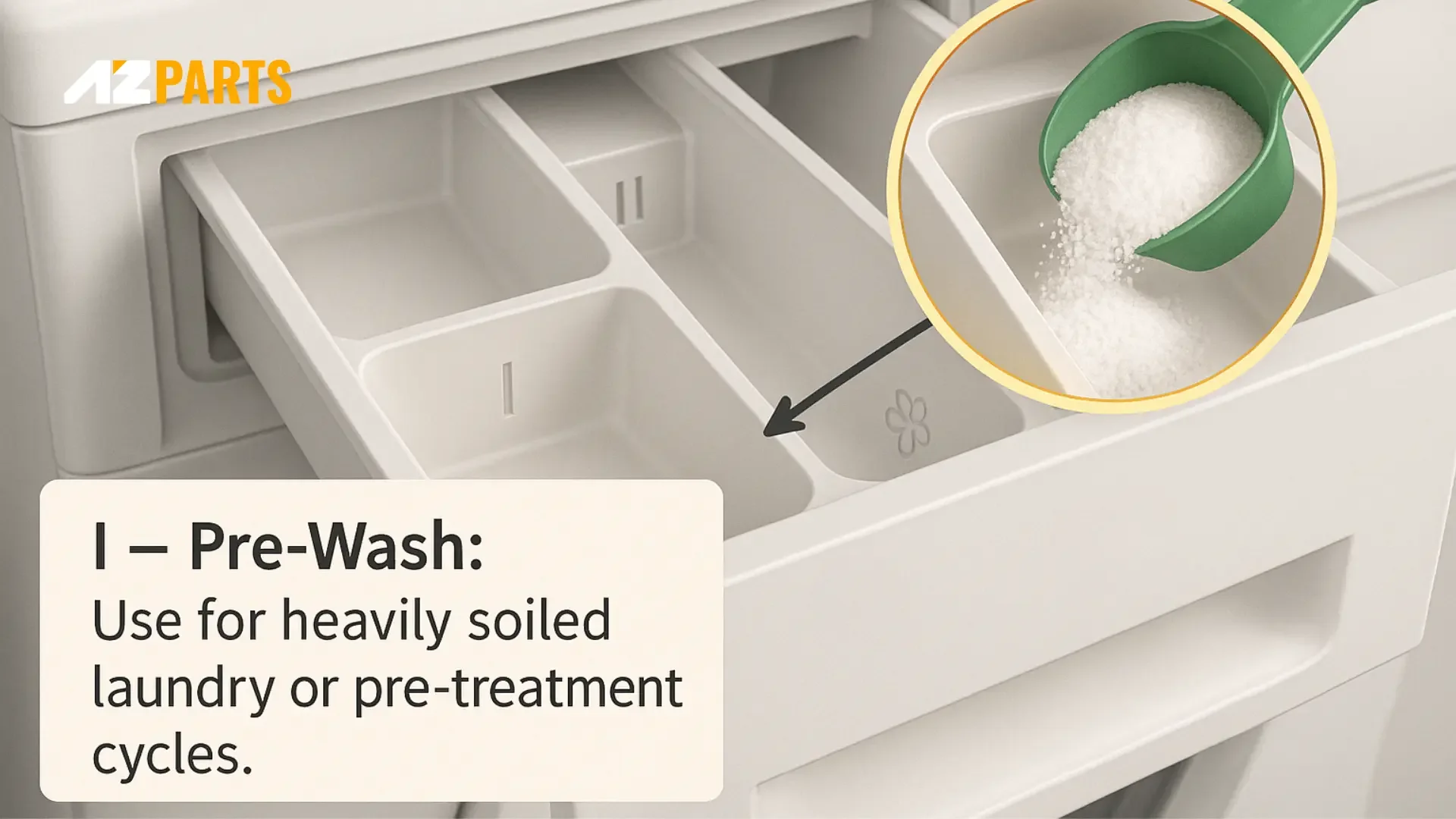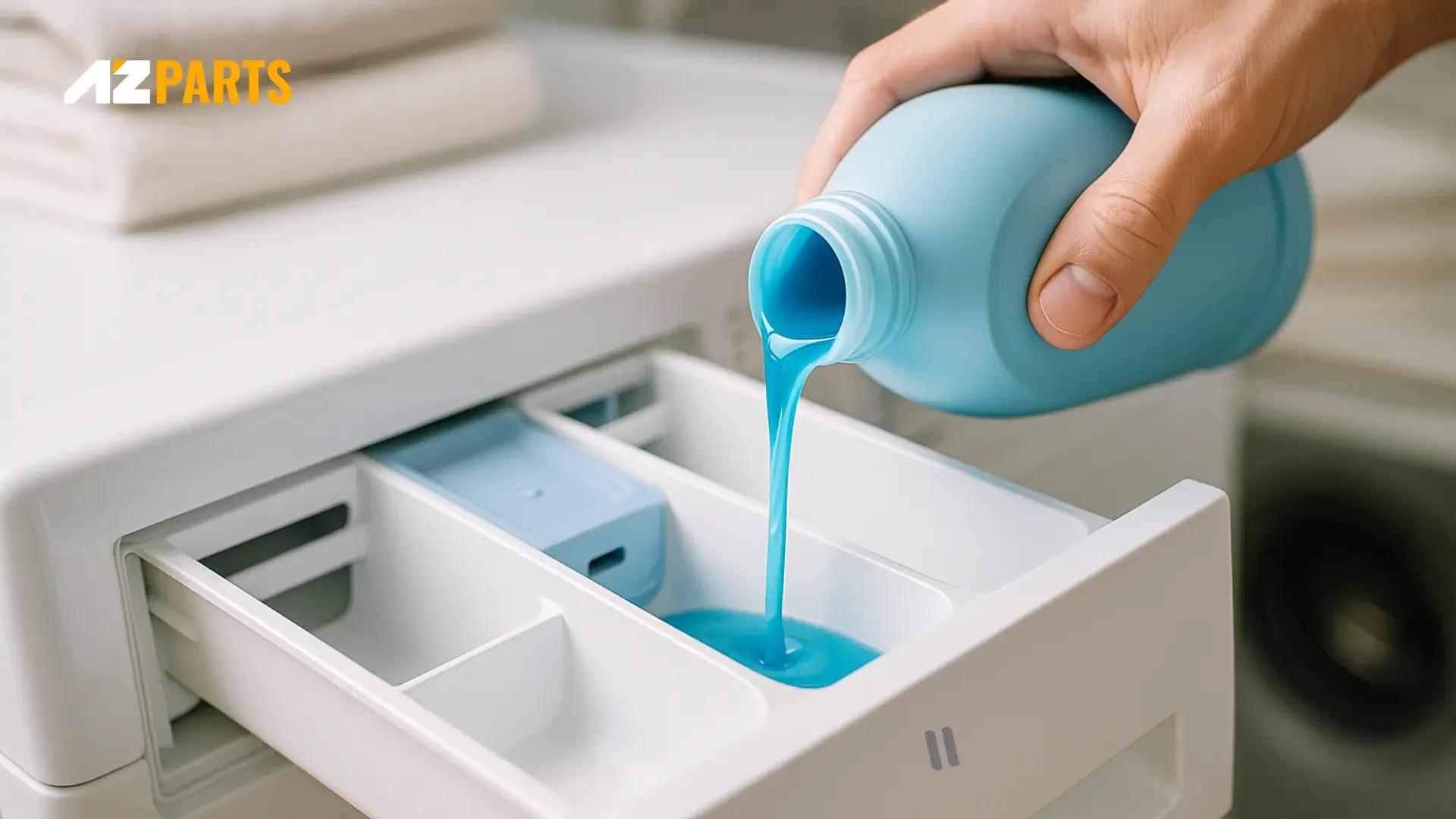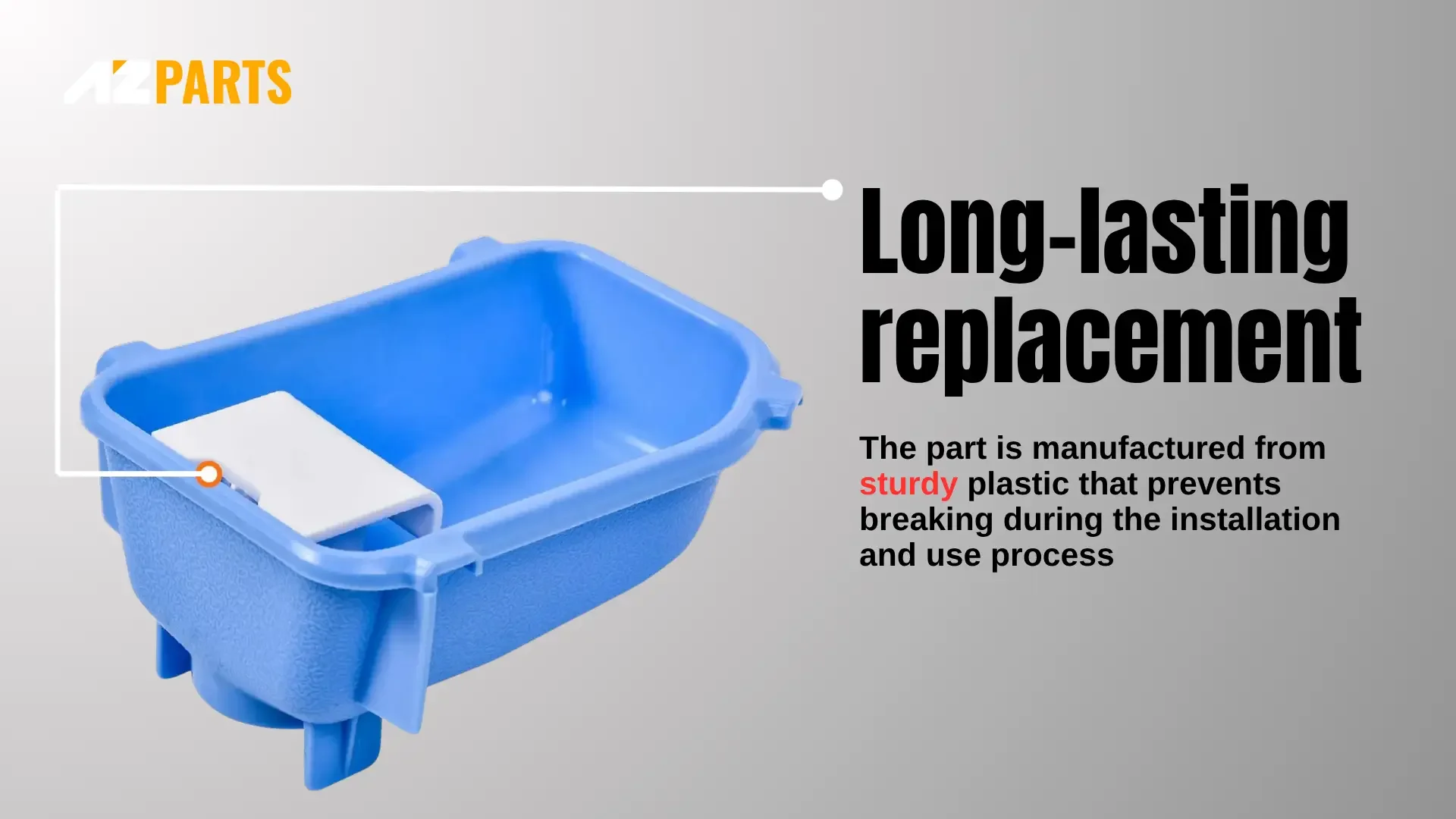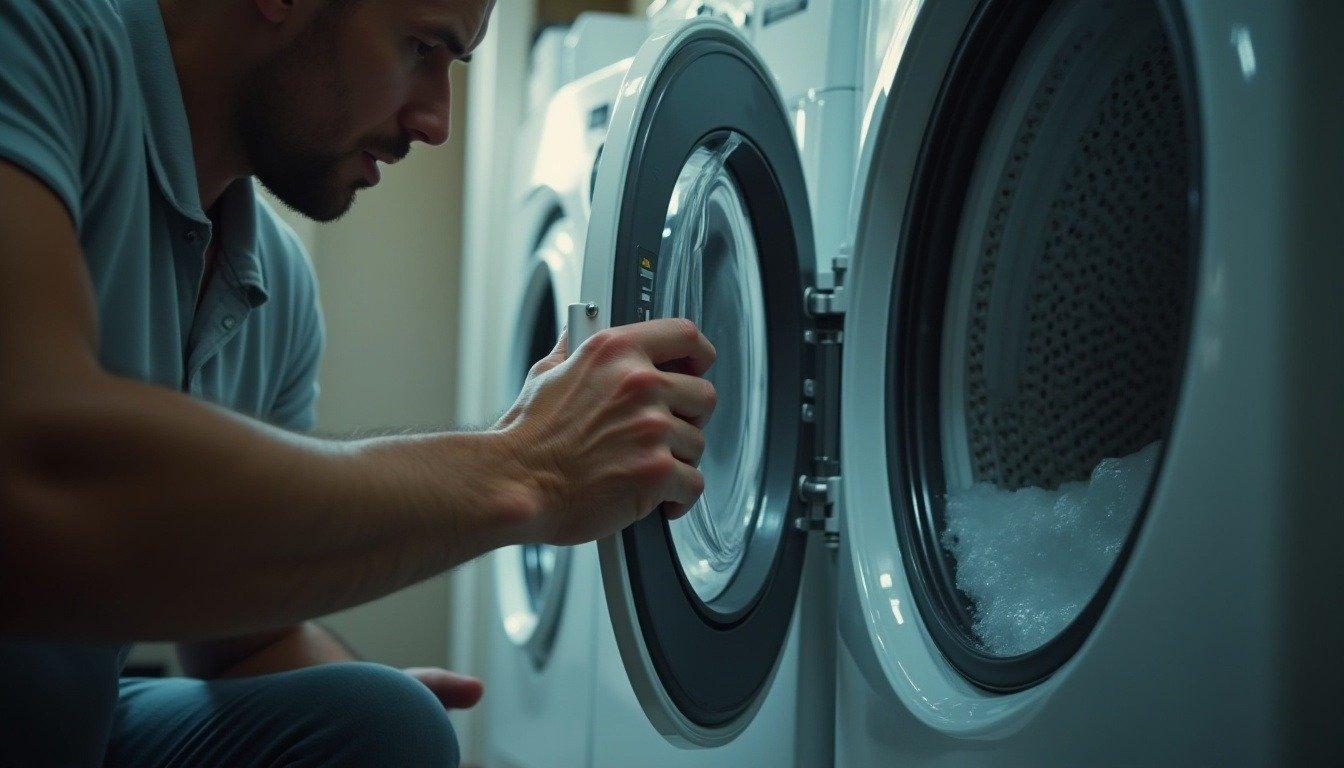Review
What Are The 3 Compartments in a Washing Machine Drawer?
AZparts Team
Updated on July 24, 2025
4 min read
Most washing machines feature a detergent drawer with three separate compartments, each designed to release cleaning agents at different stages of the wash cycle. Understanding how and when these compartments function can significantly enhance your laundry results and prolong the life of your clothes. In this guide, AZParts will explain what the 3 compartments in a washing machine drawer are, how they work, and why proper use matters.

1. Pre-wash
The pre-wash compartment is dedicated to detergent used in the optional pre-wash cycle. This cycle runs before the main wash and is designed to loosen heavy dirt, grease, or stubborn stains. It’s particularly useful when washing heavily soiled items, such as children’s outdoor clothes, uniforms, pet bedding, or garments with visible grime.
When a pre-wash program is selected, the machine draws water into this compartment and mixes it with detergent to create a mild washing solution. This solution gently agitates the clothes to dislodge surface-level dirt, so that by the time the main cycle begins, deep cleaning is more effective. If you're not using a pre-wash cycle, there's no need to add detergent to this section as it will only waste product.
Pro-tip: Use a low-foaming detergent in this compartment to prevent oversudsing, which can interfere with rinse efficiency.

You should use a low-foaming detergent in pre-wash compartment (Source: AZParts)
2. Main wash
The main wash compartment is the largest and most frequently used section of the detergent drawer. This is where you add your primary detergent, whether in liquid, powder, or tablet form, depending on your machine and detergent type. The washing machine automatically releases this detergent once the main wash cycle begins, ensuring optimal timing for deep cleaning and stain removal.
Many drawers in this compartment include a removable flap or dosing cap, which helps regulate detergent dispersion. If you’re using liquid detergent, ensure the flap is in the correct position, usually upright or inserted, to prevent premature draining. If using powder detergent, make sure it remains dry before the cycle starts to avoid clumping or clogging.
Pro-tip: Never exceed the “MAX” line. Overfilling may lead to detergent residue on clothes or in the drawer, requiring frequent cleaning.

You should fill powder under the “MAX” line of the main wash compartment (Source: AZParts)
3. Fabric softener
The fabric softener compartment is designed to hold liquid softeners only—not detergent. Fabric softener is released automatically during the final rinse phase, when detergent is no longer present in the water. This timing allows the softener to coat fabric fibers, providing a smoother texture, reducing static electricity, and leaving a fresh, pleasant scent.
You will typically find a MAX line inside this compartment. It’s crucial not to overfill it, as excess liquid can be siphoned into the drum too early, diminishing its softening effect and possibly leaving residue on your clothing or inside the drawer. If you notice that the softener isn’t dispensing correctly, the compartment might be clogged with buildup, and cleaning or replacement could be necessary.
Note: Some newer machines support automated softener dosing, while others require manual refill each cycle. Check your user manual to ensure proper usage.

You should find washer liquid detergent box with long-lasting materials from AZParts (Source: AZParts)
Knowing what the 3 compartments in a washing machine drawer are and how to use them correctly can help you achieve cleaner, softer laundry while protecting your appliance from residue buildup and damage. By using the right compartment for each type of product such as pre-wash detergent, main wash detergent, and fabric softener, you can maximize both washing efficiency and fabric care.
If your washing machine drawer is worn out, clogged, or broken, AZParts offers 3891Er2003A Washer Liquid Detergent Box compatible with a wide range of washing machine brands-designed for lifelong durability, precise dispensing, and hassle-free installation.
Discover more laundry tips, from how to load your washer correctly to choosing the right settings:
Contact Info
Address: 8 The Green, Ste A, Dover, Delaware 19901-3618, United States
Email: support@azparts.com
Washer
Further Reading
Further Reading





_1748341252.jpg&w=3840&q=75)